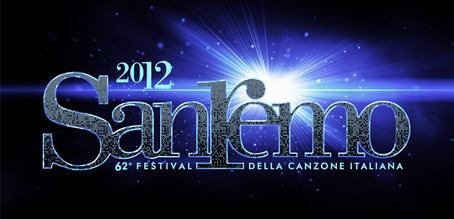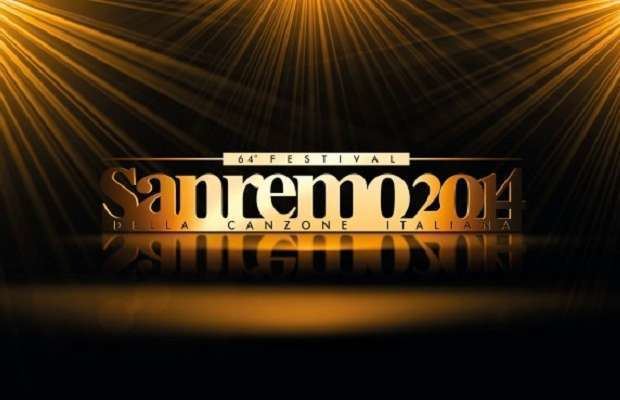Years active 1951–present | Dates 7 Feb – 11 Feb 2017 | |
 | ||
Instances Sanremo Music Festival 2, Sanremo Music Festival 2, Sanremo Music Festival 2, Sanremo Music Festival 2, Sanremo Music Festival 2 Profiles | ||
The Festival della canzone italiana di Sanremo (in English: Italian song festival of Sanremo) is the most popular Italian song contest and awards, held annually in the city of Sanremo, in Italy, and consisting of a competition amongst previously unreleased songs. Usually referred to as Festival di Sanremo, or outside Italy as Sanremo Music Festival or Sanremo Music Festival Award, it was the inspiration for the Eurovision Song Contest.
Contents

It is the music equivalent to the Premio Regia Televisiva for television, the Premio Ubu for stage performances, and the Premio David di Donatello for motion pictures, but with a longer history and contest associated with.

The first edition of the Sanremo Music Festival, held between 29 and 31 January 1951, was broadcast by RAI's radio station Rete Rossa and its only three participants were Nilla Pizzi, Achille Togliani and Duo Fasano. Starting from 1955 all the editions of the Festival have been broadcast live by the Italian TV station Rai 1.

From 1951 to 1976, the Festival took place in the Sanremo Casino, but starting from 1977, all the following editions were held in the Teatro Ariston, except 1990's one, held at the Nuovo Mercato dei Fiori.
Between 1953 and 1971, except in 1956, each song was sung twice by two different artists, each one using an individual orchestral arrangement, to illustrate the meaning of the festival as a composers' competition, not a singers' competition. During this era of the festival, it was custom that one version of the song was performed by a native Italian artist while the other version was performed by an international guest artist.
The festival is used as the way of choosing the Italian entry to the Eurovision Song Contest and it has launched the careers of some of Italy's most successful singers, including Andrea Bocelli, Paola e Chiara, Giorgia, Laura Pausini, Eros Ramazzotti, and Gigliola Cinquetti.
The Festival airs annually in Australia on the multicultural broadcaster SBS One.
History
In the aftermath of World War II, one of the proposals to revitalize the economy and the reputation of Sanremo was to create an annual music festival to be held in the city. During the summer of 1950, the administrator of the Sanremo Casino, Piero Bussetti, and the conductor of the RAI orchestra, Giulio Razzi, rediscussed the idea, deciding to launch a competition among previously unreleased songs. Officially titled Festival della Canzone Italiana (English: Italian song festival), the first edition of the show was held at the Sanremo Casino on 29, 30 and 31 January 1951. The final of the competition was broadcast by Rete Rossa, the second most important RAI radio station. Twenty songs took part in the competition, performed by three artists only–Nilla Pizzi, Duo Fasano and Achille Togliani.
Starting from the third edition of the festival, held in 1953, each song was performed by two different artists with different orchestras and arrangements. Two years later, in 1955, the festival made its first appearance on television, since part of the final night was also broadcast by RAI's channel Programma Nazionale. The last night of the show was also broadcast in Belgium, France, Germany, the Netherlands and Switzerland.
In 1964, Gianni Ravera, who organized the 14th Sanremo Music Festival, slightly changed the rules of the contest, requiring each song to be performed once by an Italian artist, and once by an international singer, which was allowed to perform the song in any language. The same rule was applied in the following year's contest. Between 1967 and 1971, entries were not forced to be interpreted by foreign artists, but double performances were kept. Starting from 1972, each entry was sung by one artist only.
The competing artists were split for the first time into "Big artists" and "Young artists" during the Sanremo Music Festival 1974. The competition had one winner only, but the entries in the "Young artists" category had to go through an elimination round, while "Big artists" were directly admitted to the final.
In 1977, the Sanremo Casino, which hosted all the previous editions of the contest, was not available for renovations, therefore the show moved to the Teatro Ariston. The theater later became the usual location for the annual contest, hosting it every year except in 1990, when the show was held at the Nuovo Mercato dei Fiori, also known as Palafiori.
In 1980, pre-recorded backing tracks replaced the orchestra, while playback performances were allowed in 1983 during the final. In 1984 and 1985, all the artists were forced to perform in playback, while live performances with the orchestra were reintroduced in 1986. During the same years, several other changes were introduced in the contest. In 1982, accredited music journalists decided to create an award to recognise the best song competing in the festival. Starting from 1983, the prize was officially awarded during the event. The critics' prize was later entitled to Mia Martini, who was the first artist receiving it in 1982 for her entry "E non finisce mica il cielo".
Moreover, starting from 1984, the separation between newcomers and established artists was marked introducing two different competitions with separate winners. In 1989 a third category, the Upcoming Artists Section, was introduced, but it was removed the following year. Only in 1998 the top three artists in the newcomers section were allowed to compete in the main competition. This led to the victory of the debuting Annalisa Minetti, which generated several controversy and led to the reintroduction of completely separate competitions starting from 1999.
The distinction among different categories was abolished again in 2004. The following year, the contest included five different categories—Newcomers, Men, Women, Groups and Classics. The winner of each category competed for the final victory of the contest. The category Classic was abolished in 2006, while starting from 2007 the festival came back to the rules used in the 1990s, with two completely separated competitions for established artists and newcomers.
In 2009, a new competition, entirely held through the Web, was introduced by the president of the 59th edition of the contest, Paolo Bonolis. Titled Sanremofestival.59, the contest was not held in the following years.
Notable foreign duet singers
Notable guest artists of that time were, among others:
Hosts
The first edition of the Sanremo Music Festival was hosted by Nunzio Filogamo. He also hosted the next three editions of the musical event. In 2003, Pippo Baudo hosted the festival for the eleventh time, matching the record previously held by Mike Bongiorno. He later overtook this record, hosting the Sanremo Music Festival in 2007 and in 2008.
This is the full list of the hosts of the festival:
Controversy
In 2009 the song "Luca era gay" (English: Luca Was Gay), written and sung by Povia, was considered by some gay rights organizations as an anti-gay song. The controversy was also based on the name of the song's character: according to Aurelio Mancuso, president of the Arcigay, the name refers to Luca Tolvi, who claimed that Joseph Nicolosi cured his homosexuality. Povia denied this thesis and claimed that the song is about a man he met on a train, whose real name is Massimiliano. The song won second place in the Festival.
